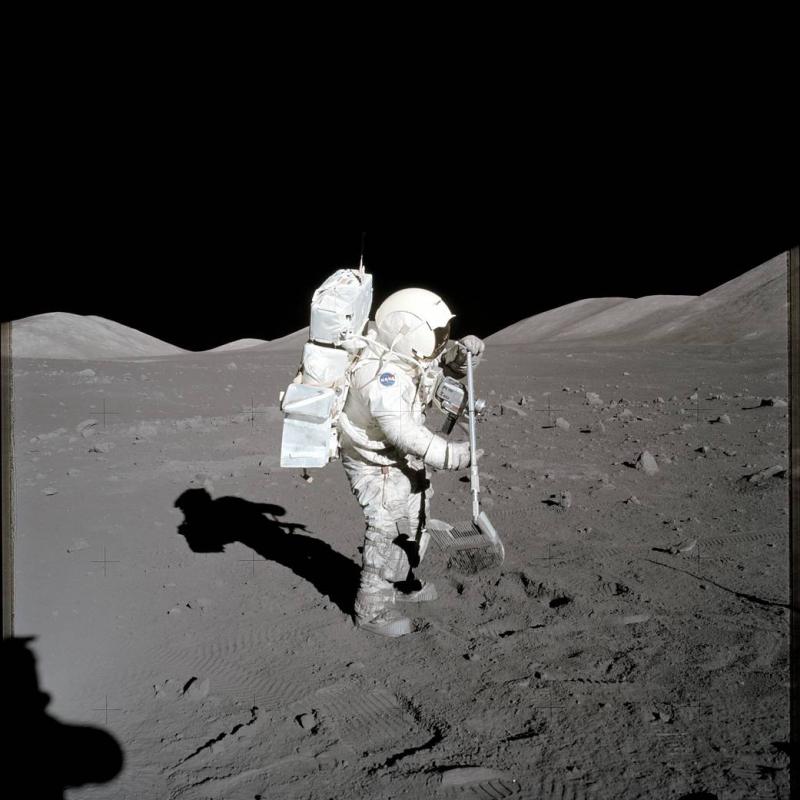Only 118 grams of basalt rock and yet a big step for mankind: To mark the 50th anniversary of the first moon landing, the Museum für Naturkunde Berlin will be showing the moon sample 70035.41 from the NASA Johnson Space Center in Houston starting July 20, 2019. The approximately 3.7 billion year lava rock is part of a small themed exhibition in the foyer of the Natural History Museum.
Theme exhibition at the Museum für Naturkunde Berlin
"MOON WALK - 50 years moon landing" looks at the significance of the moon missions at the end of the 60s and beginning of the 70s for today's space research. Tanja Mohr-Westheide, impact researcher at the Museum für Naturkunde Berlin, collected the moon sample for the mission at the NASA Johnson Space Center in Houston, Texas. The sample, cast in resin, will be on loan in the exhibition until 11 October 2019.
"The moon serves as a reference for researchers: its craters and rocks are an archive of impact events that occurred on Earth during the same period - but are no longer visible. Moon samples are therefore still interesting for science after decades", says Professor Kai Wünnemann, Head of the Department "Impact and meteorite research" in the research area "Evolution and Geoprocesses". The moon samples and the scientific findings of the Apollo missions provide information about the origin and development of the moon and the earth.
Training for NASA: Space travelers geologically trained in Germany
The moon sample on display was collected by an astronaut from the Apollo 17 mission who was trained on the border between Bavaria and Baden-Württemberg. Dieter Stöffler, later general director of the Museum für Naturkunde Berlin, trained several astronauts in the summer of 1970 in an impact crater in the Nördlinger Ries, about 26 kilometres in size, to recognize special rock forms and to take samples. The Apollo 14 and Apollo 17 teams underwent this field training.
Getting to know moon experts for the 50th anniversary
On 21 July 1969, at 3:56 a.m. German time, Neil Armstrong was the first man to enter the moon. How important are the Apollo missions for research? What does the moon have to do with the origin of life on Earth? Anyone wishing to delve deeper into lunar research can talk directly to experts from planetology, meteorite research, cosmochemistry and physics 50 years later: From 11 a.m. to 4 p.m. on Saturday, 20 July, on the occasion of the upcoming anniversary, they will answer the questions of interested visitors to the Museum für Naturkunde Berlin about the moon.
Background
Worldwide, there are 382 kilograms of moon samples from the Apollo missions, 301 grams from the Luna missions and 229 kilograms of moon meteorites. They are the subject of geological, mineralogical and physical research into the formation of the planetary system. Scientists of the Museum für Naturkunde Berlin analyse meteorites, observe craters on planetary surfaces and create computer simulations. They work closely together in a network financed by the German Research Foundation (DFG), which also includes the Freie Universität zu Berlin, the Technische Universität Berlin, the Westfälische Wilhelms-Universität Münster and the German Aerospace Center.
